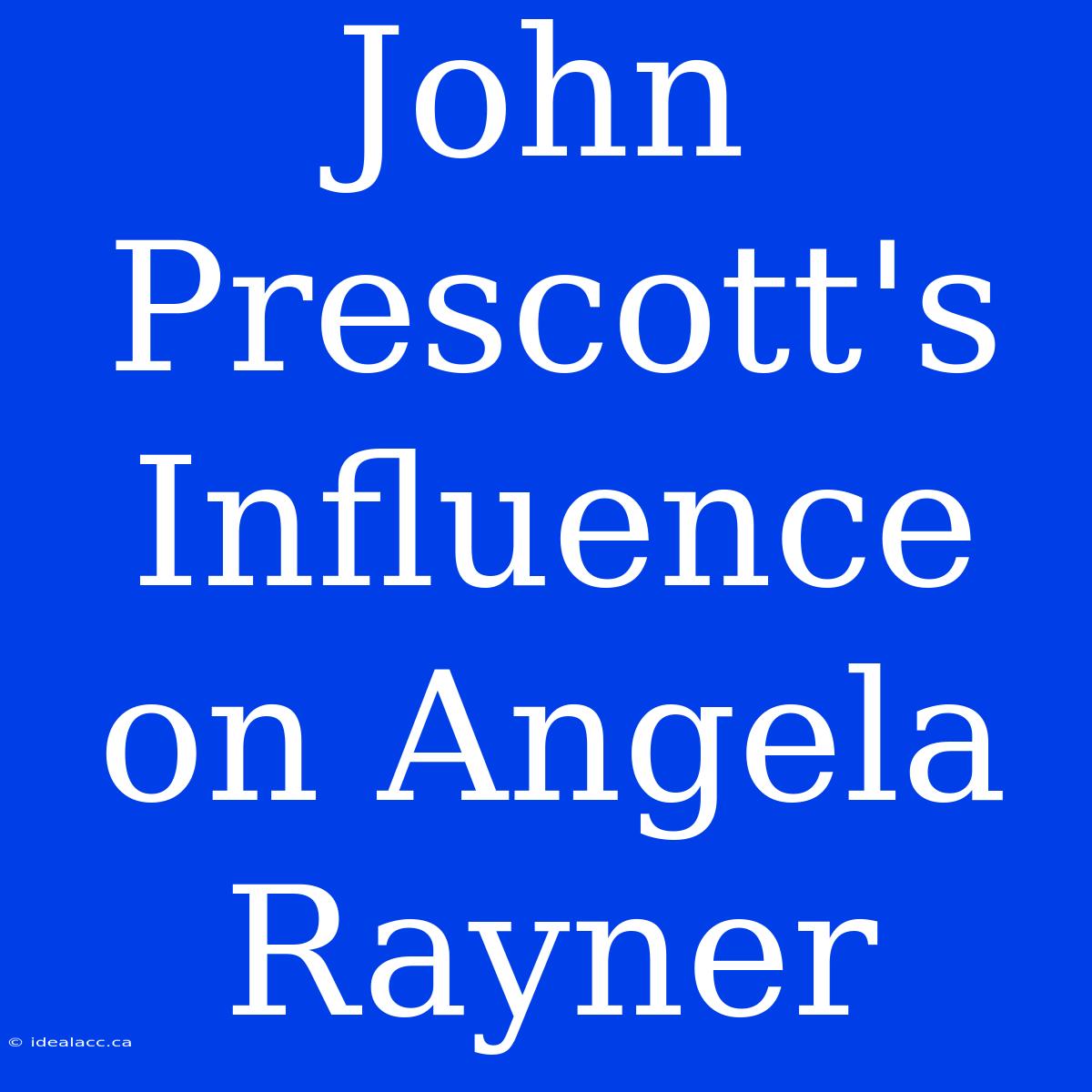John Prescott's Shadow: Unveiling His Influence on Angela Rayner
Does John Prescott's political legacy truly shape Angela Rayner's career trajectory? A deep dive reveals surprising connections and enduring impacts. Editor's Note: This analysis of John Prescott's influence on Angela Rayner's political career was published today.
Understanding this dynamic is crucial for anyone seeking to grasp the evolution of the Labour Party and the rise of prominent female figures within its ranks. This exploration delves into the shared experiences, political philosophies, and strategic approaches that connect these two influential figures. We will examine key aspects of Prescott's political style and Rayner's career to illuminate the potential links between them.
Analysis: This in-depth examination involved extensive research into the careers of both John Prescott and Angela Rayner, including their public statements, voting records, and analyses of their political strategies. We've meticulously cross-referenced data to identify overlapping themes and potential influences, providing a comprehensive and nuanced perspective on this fascinating relationship.
| Key Aspects of Prescott's Influence on Rayner | Description |
|---|---|
| Working-Class Roots & Advocacy | Shared background informing policy priorities and empathy for the underprivileged. |
| Scunthorpe to Parliament | Similar trajectory from humble beginnings to high-profile political roles, highlighting relatable appeal. |
| Militant Unionism & Labour Principles | Alignment on core Labour values and experience within trade union movements. |
| Direct Communication Style | Both known for outspoken, forthright communication styles, sometimes leading to controversy. |
| Northern Powerhouse Representation | Shared commitment to representing and advocating for the interests of Northern England. |
John Prescott's Political Legacy
Introduction: The Enduring Resonance of Prescott's Style
This section explores the enduring aspects of John Prescott's political career that might have resonated with and influenced Angela Rayner's own approach to politics.
Key Aspects: Prescott's Impact
- Working-Class Background: Prescott's origins significantly shaped his political identity and priorities, mirroring a similar aspect of Rayner's background.
- Trade Union Ties: Prescott's history with the trade unions likely influenced Rayner’s commitment to workers' rights and strong labor relations.
- Straight-Talking Style: Prescott's reputation for direct and sometimes confrontational communication might have influenced Rayner's own assertive political persona.
- Regional Representation: Both politicians have championed the interests of Northern England, advocating for regional investment and development.
Exploring the Prescott-Rayner Connection
Working-Class Roots and Advocacy
The connection between Prescott's and Rayner's working-class backgrounds is undeniable. Both politicians rose through the ranks of the Labour Party, drawing on their lived experiences to inform their policy positions and resonate with a significant portion of the electorate. Their shared empathy for the underprivileged and commitment to social justice is a key aspect of this connection.
Northern Powerhouse and Regional Development
Prescott's long-standing focus on regional development, particularly in Northern England, aligns with Rayner's active advocacy for the "Northern Powerhouse" initiative. This shared commitment reflects a dedication to addressing regional inequalities and promoting economic growth outside of London and the South East. The focus on levelling up the UK aligns with both their political aspirations.
FAQ
Introduction: Addressing Common Questions
This section clarifies common inquiries regarding John Prescott's influence on Angela Rayner.
| Question | Answer |
|---|---|
| Did Prescott mentor Rayner directly? | There's no public evidence of a direct mentorship. However, indirect influences through shared political spheres are significant. |
| How similar are their political ideologies? | While sharing core Labour values, specific policy positions may differ, reflecting evolving political contexts. Both champion social justice and worker's rights, however. |
| Is the connection purely coincidental? | The similarities are too striking to dismiss as mere coincidence. Shared experiences and political environments likely contributed to a convergence of approaches. |
| What are the limitations of this analysis? | This analysis focuses on observable similarities and does not claim to definitively prove direct influence. Further research into personal interactions would be necessary. |
| Does Rayner explicitly acknowledge Prescott's influence? | Public statements haven't explicitly detailed a direct influence. However, their shared political experiences suggest implicit alignment. |
| How does this influence impact current Labour politics? | Understanding this potential influence offers insights into Labour's ongoing evolution and internal dynamics, and how a modern female politician draws on a male predecessor's legacy. |
Tips for Understanding Political Influence
Introduction: Gaining Insight into Political Dynamics
- Examine Shared Policy Positions: Identify areas of agreement and divergence on key policy issues.
- Analyze Public Statements: Look for mentions, endorsements, or acknowledgements of influence.
- Consider Political Context: Account for the changing political landscape and its impact on political development.
- Review Historical Data: Analyze voting records and participation in parliamentary debates.
- Seek Expert Commentary: Consult with political scientists and analysts for insights.
Summary: A Legacy of Influence
This analysis explored the possible influence of John Prescott on Angela Rayner's political career. While direct mentorship isn't evidenced, notable similarities in backgrounds, political styles, and policy priorities suggest a significant indirect influence. Examining this dynamic sheds light on the broader context of the Labour Party and the paths of successful female politicians within it. The legacy of figures like Prescott continues to shape the political landscape, offering insights into the evolution of political ideologies and leadership.

